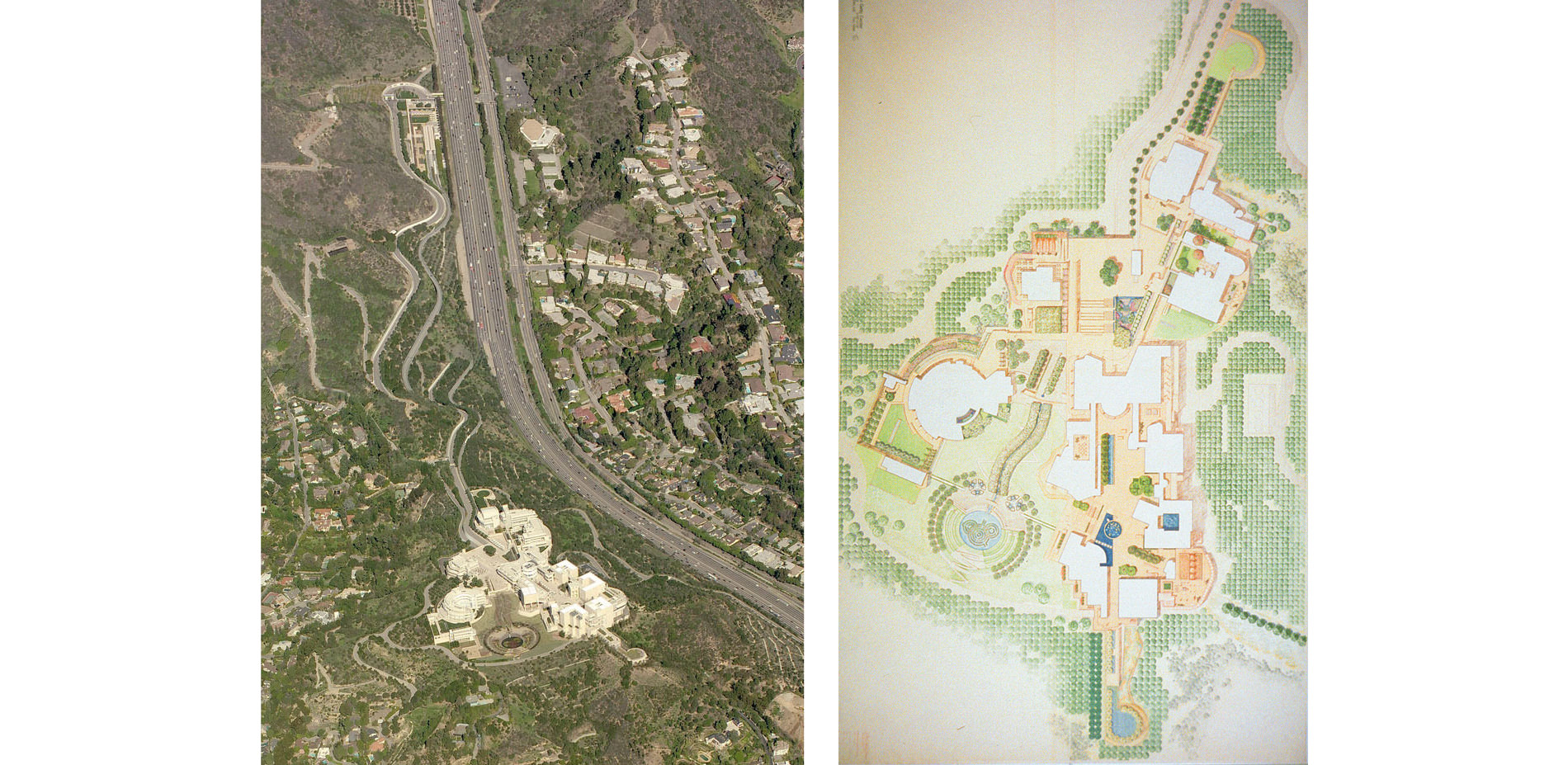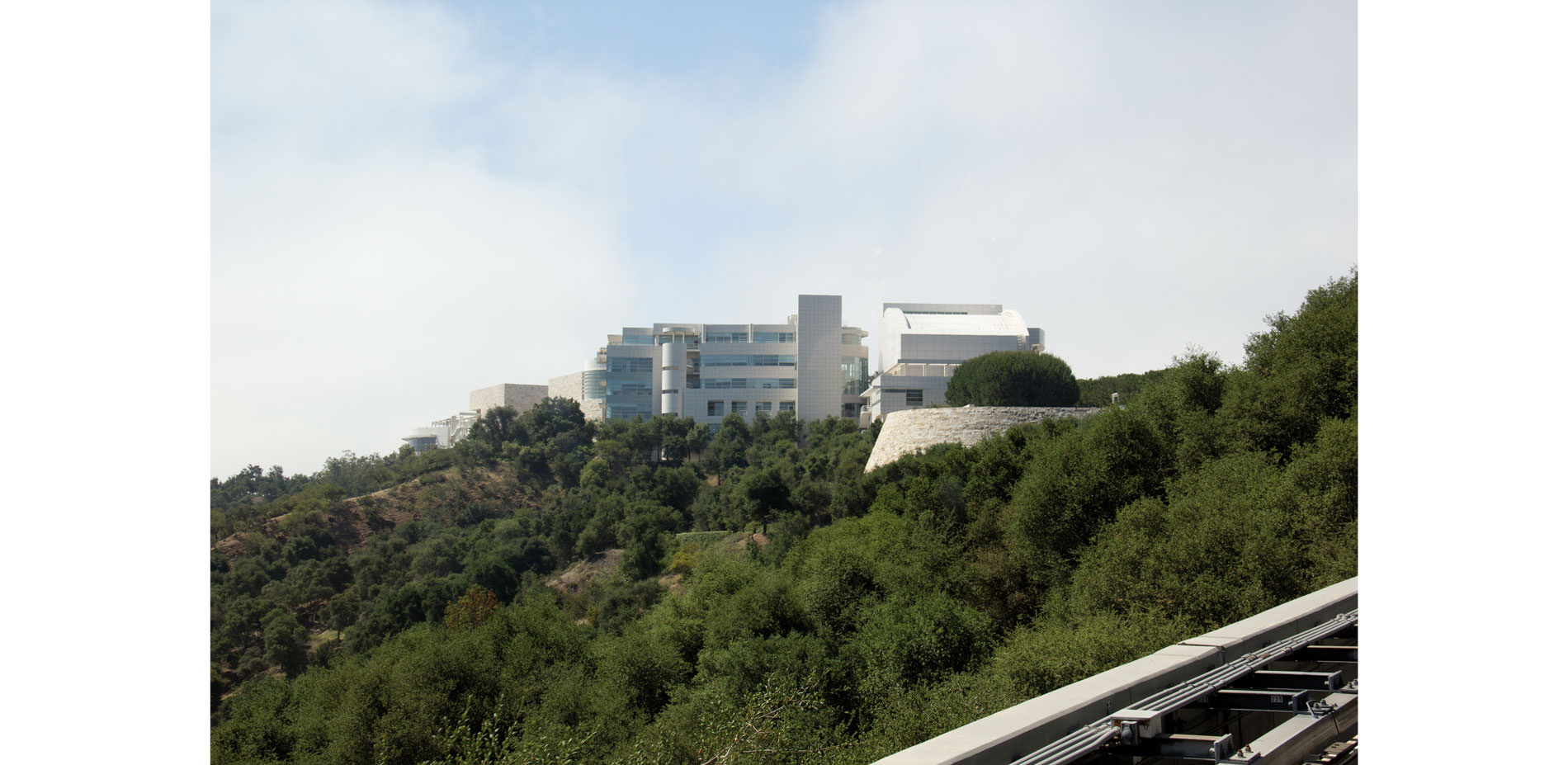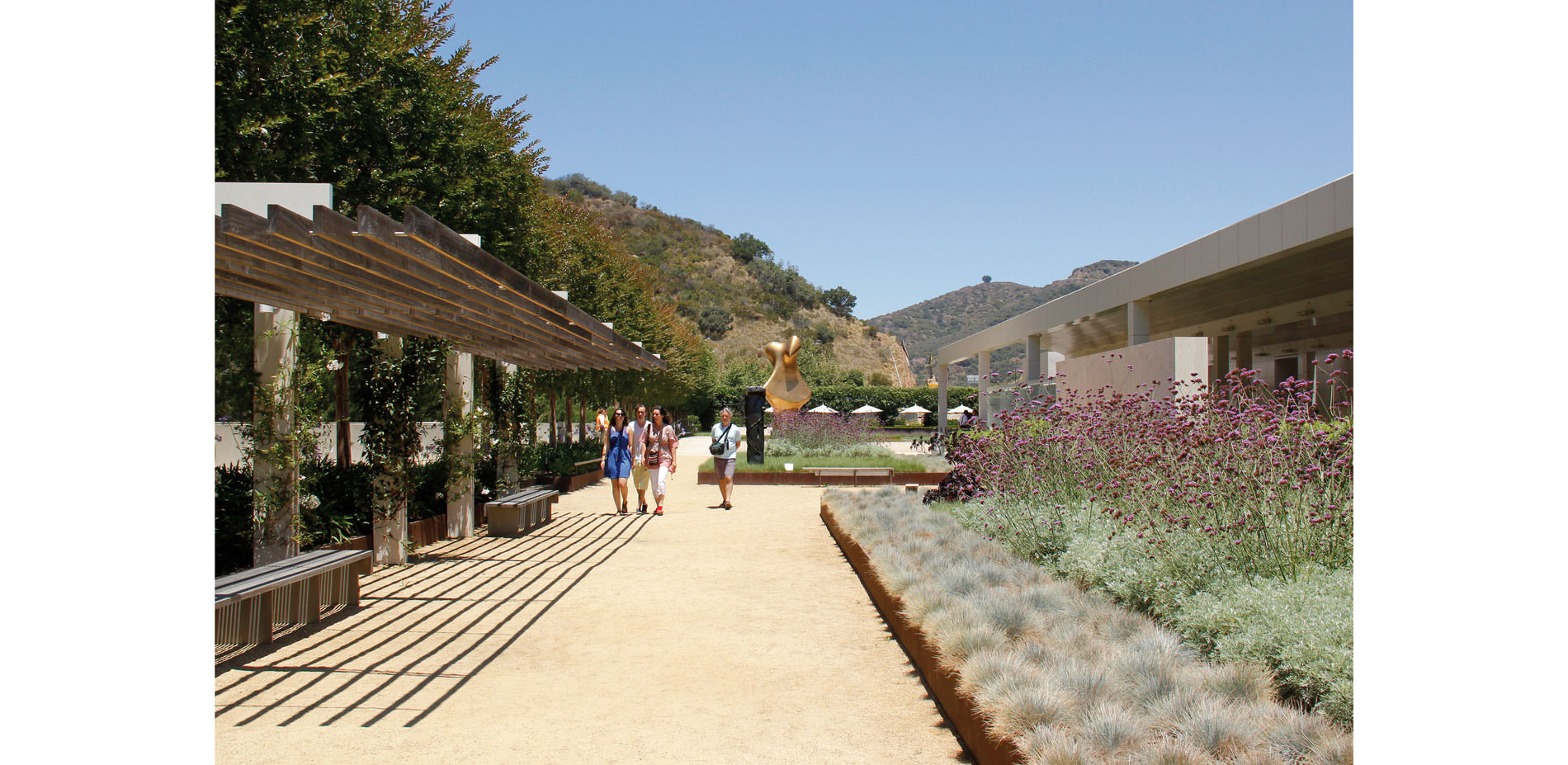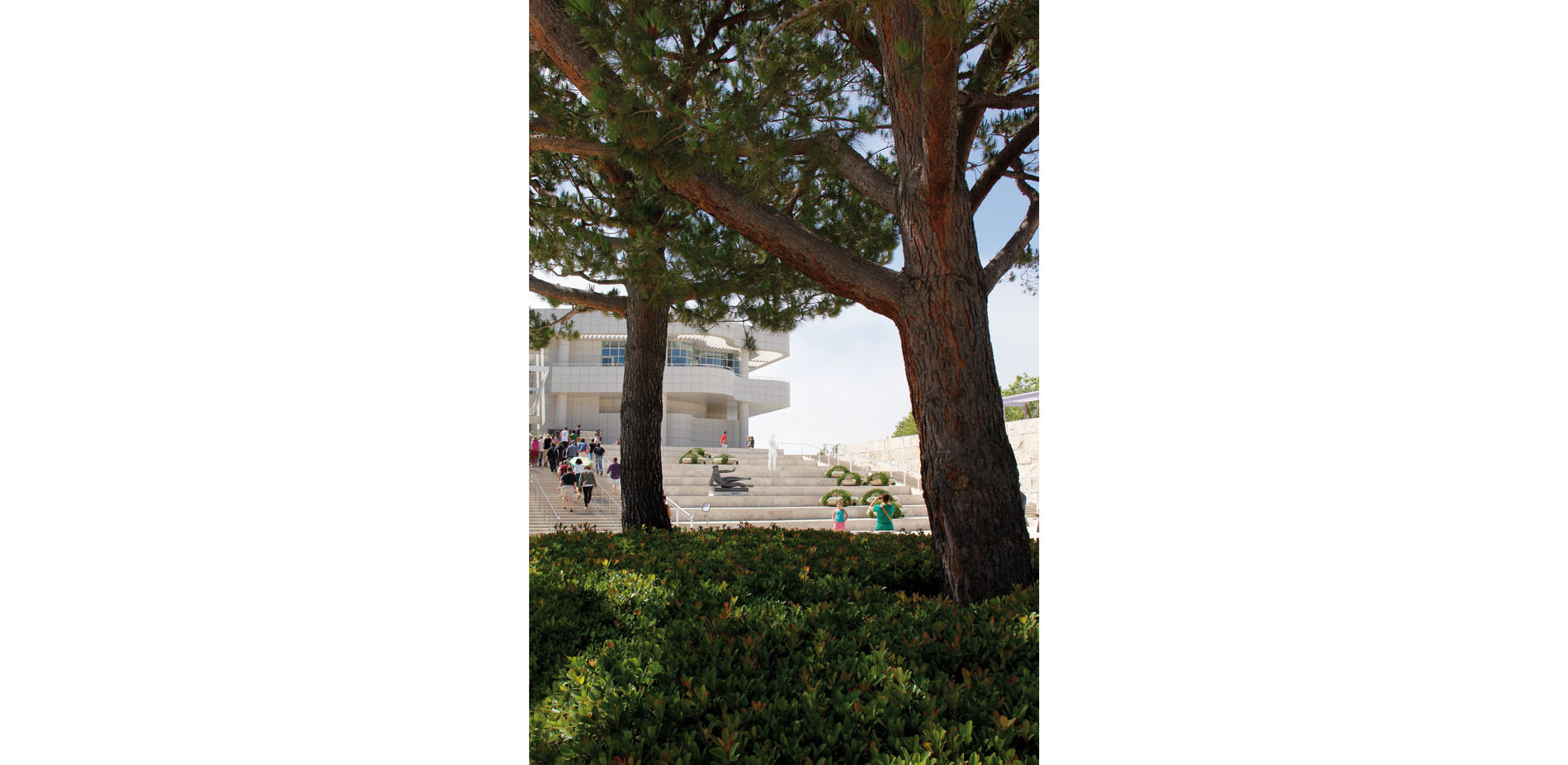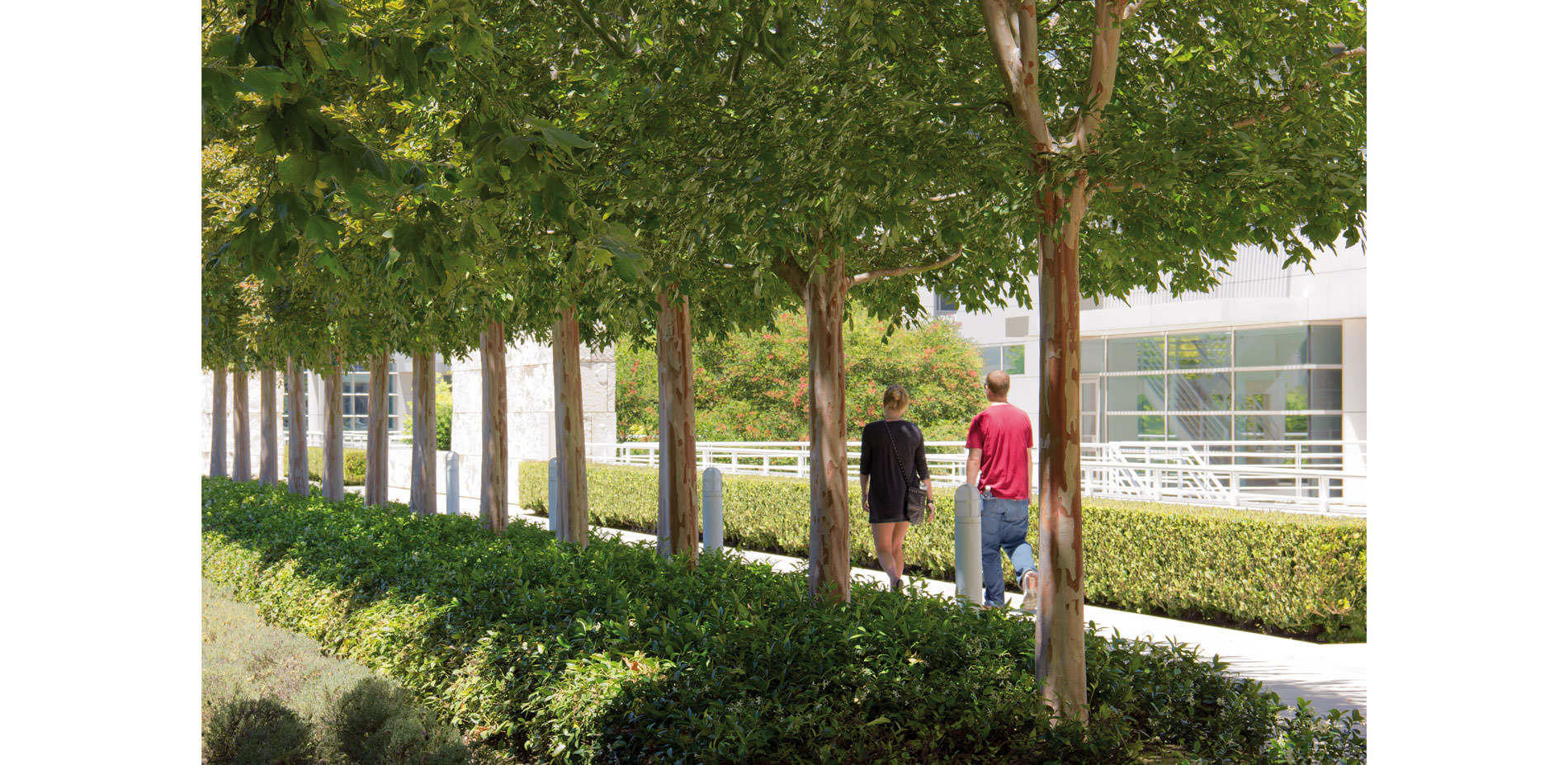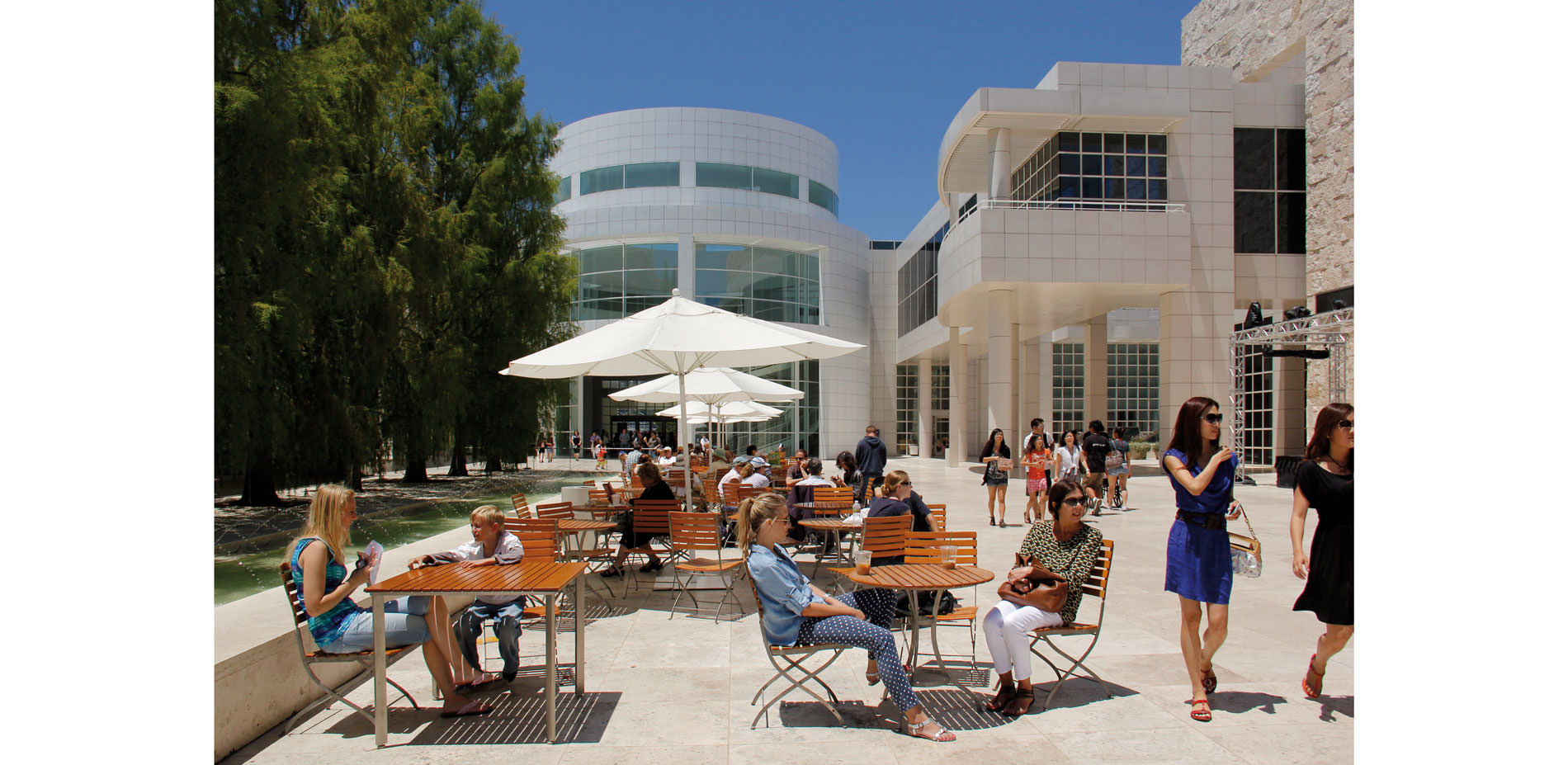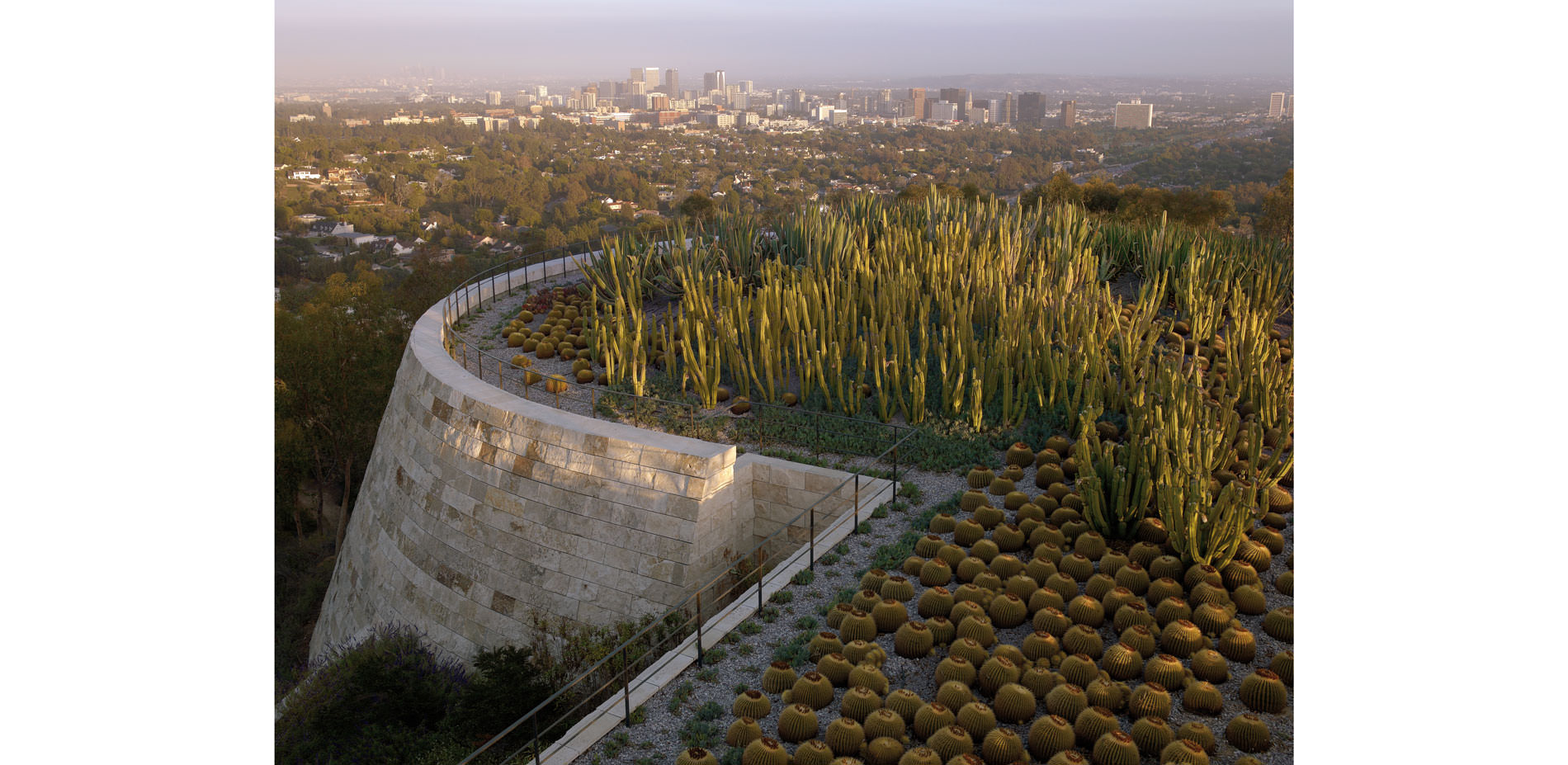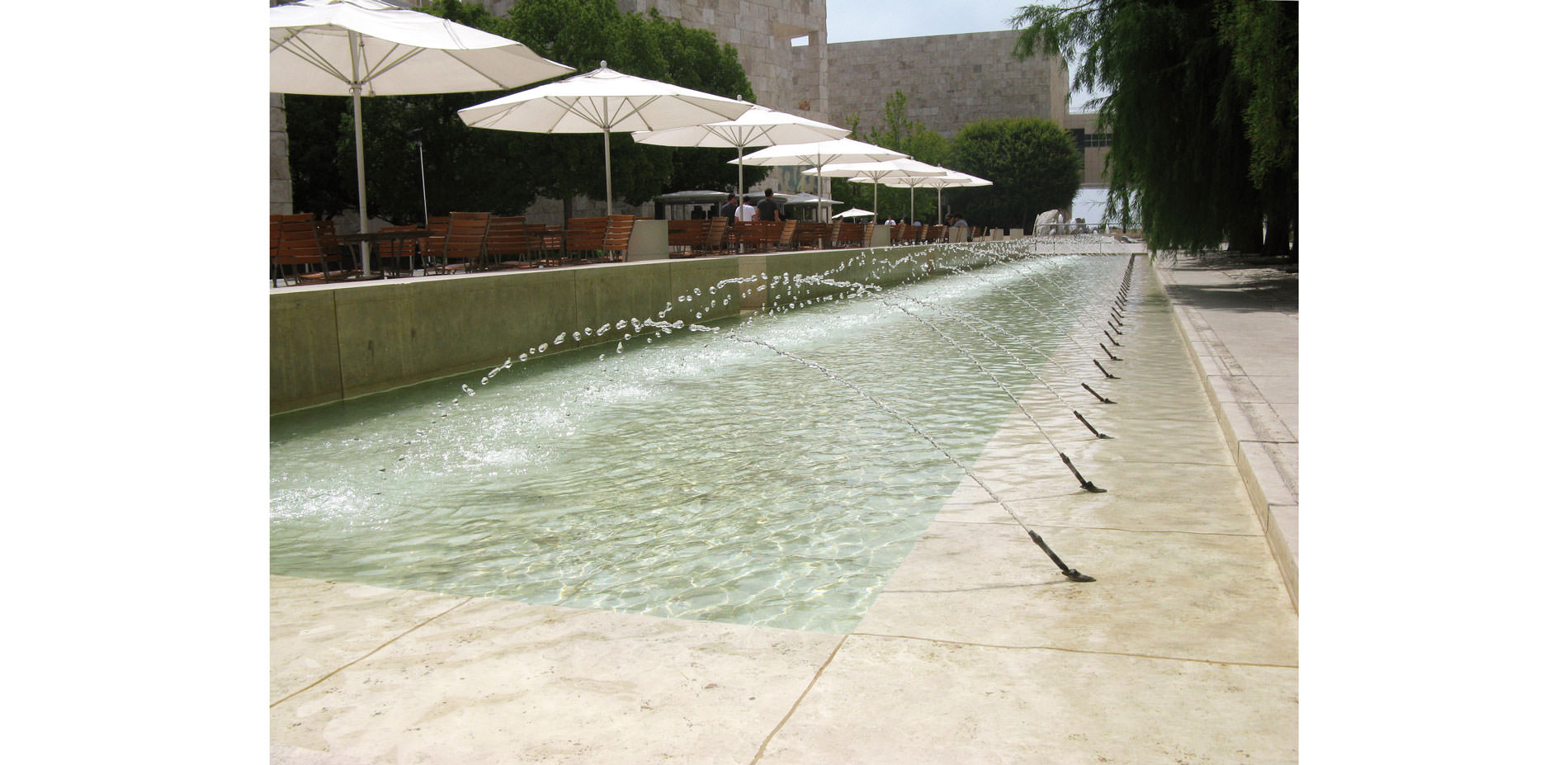The J. Paul Getty Center
The Landmark Award
Los Angeles, CA, USA | OLIN | Client: J. Paul Getty Trust
It’s an interesting project because as it has grown, its beauty has become more apparent.
- 2017 Awards Jury
PROJECT CREDITS
Architect:
- Richard Meier & Partners
Landscape Architects for Main Complex:
- OLIN
- Laurie D. Olin, FASLA - Principal-in-Charge
- Dennis C. McGlade, FASLA - Principal
- Robert J. Bedell - Associate
- Howard J. Supnik, ASLA - Project Manager
- Whitney Armstrong
- Leslie Bishop ASLA
- Lundy Clark, David Elliot
- Frank Garnier
- Mitchell Glass ASLA
- Kathleen John-Alder, ASLA
- Elaine Rosenberg
- Fong & Associates (now Fong Hart Schneider + Partners)
- Allen Fong - Principal
- Michael Spaulding ASLA - Senior Associate
- Timothy White - Project Manager
- David Schneider
- Shelley Bachelder
- Raymond Hansen Associates, Inc.
- Raymond Hansen - Principal
- Dennis Hickok (with Richard Meier & Partners)
- Andrew Spurlock Martin Poirier Landscape Architects (Lower Central Garden with Robert Irwin, Artist)
Landscape Architects for slopes and entrance facilities at foot of hill:
- Emmet L. Wemple & Associates
- The Office of Dan Kiley
JPGT's Manager of Grounds and Gardens:
- Richard Naranjo
Irrigation Consultant:
- Lance Sweeney Consulting (now Sweeney + Associates)
- Lance Sweeney - Principal, Daniel ZumMallen
Fountain Consultant:
- CMS Collaborative
Landscape Contractor:
- Valley Crest Landscape Inc., American Landscape (partial slopes)
- Tracy and Ryder (partial slopes)
General Contractor:
- Dinwiddie Construction Co.
Civil Engineers:
- B & E Engineers
- RBA Partners, Inc.
Structural Engineers:
- Robert Englekirk, Inc.
Soils Consultant:
- Philip J. Craul and Soil and Plant Laboratory, Inc.
Fountain Consutant:
- CMS Collaborative
PROJECT STATEMENT
Conceived and constructed over a period of nearly twenty years, the J. Paul Getty Center stands atop the Santa Monica Mountains as a bastion of art, culture, and design for all people. The landscape of the Getty is indelibly connected to the context of Southern California and the iconic architecture of the museum campus, and it springs from many generations of the Mediterranean and Californian garden traditions. Utilizing modern technology and ancient skills, combining utility with pleasure, horticulture and aesthetics, artifice and nature, the landscape elements of the Getty Center combine with the architecture and topography to create an extraordinary and unique addition to the environment of Los Angeles.
PROJECT NARRATIVE
The J. Paul Getty Center sits on a ridgeline of the Santa Monica Mountains overlooking Los Angeles, with extensive views of the San Bernadino Mountains, San Gabriel Mountains and the Pacific Ocean. The 110-acre site brings together the diverse programs and collections of this iconic art institution. Reflective of the Getty’s stature and historical focus of its collections, the complex is a reinterpretation of a classic Italian Renaissance villa and garden as a contemporary public arts institution in southern California.
The Getty Center is a contemporary arts organization about European art, located in the Mediterranean climate of Los Angeles. It seemed only appropriate to create landscape spaces inspired by the larger Mediterranean context of Spain, France and Italy. Not surprisingly, Italian Renaissance hillside villas inspired the architect’s concept for the composition, where architecture meets terrain with stepped terraces, gardens and courtyards.
While the building ensemble frames views that capture the larger setting – the ocean, the freeway, Los Angeles and the mountains – the gardens create unique local identities with plantings that develop a sequence and rhythm of color, texture, light and shade, fragrance and form that complement the architecture. As one moves higher within the complex, the temperature and color of plants increases in relationship to the degree of exposure to the sun. Cooler blue-greens, blues, purples and greys prevail in lower areas and northern exposures while warm greens and yellows characterize the hotter, south-facing exposures at higher elevations. For staff and visitors, the gardens create an exquisitely appointed vestibule for the offices and museum and set the stage for the treasures encountered within.
In order to help settle the large complex of buildings into its dramatic setting atop a ridge high above the city and freeways, and to buffer and partially shield nearby communities, a vast, 600-acre preserve of over ten thousand native oaks, tens of thousands of ground cover plants, hundreds of pines, and dozens of cedars has been created on the slopes surrounding the Center. Selected for their ability to prevent erosion and fires, the bane of human habitation in the hills of Southern California, the plants of this forest quickly came to be inhabited by numerous indigenous animals and birds, thus achieving the Trust's goal of being a good neighbor while setting an example of environmental responsibility in terms of conservation and reclamation with beauty.
Visitors’ experience of the Getty begins far below the museum itself, in the Fran and Ray Stark Sculpture Garden. The designers took a holistic approach to siting the sculpture collection, integrating architecture and landscape with the 28 works to create site-specific placement throughout the campus. From the sculpture garden, an electric tramcar shuttles patrons up the mountainside and through the oak grove to emerge at the museum. Since its opening, the Getty and its grounds have been entirely free and open to the public year-round, and many residents of the region have come to use the Getty landscape as a public park and meeting space. Italian stone pines line the entrance drive, pruned as in Rome to highlight their distinctive silhouette. A bosque of London plane trees revives the ancient horticultural practice of pollarding, a pruning technique seldom seen in the United States. Superb large specimens were individually selected and pre-purchased to guarantee their visual impact upon installation.
The Getty gardens embrace the California garden tradition, characterized by original and inventive use of a wide range of plants, native and exotic. Horticultural techniques throughout combine function with pleasure, artifice with nature, and modern technologies such as those required for planting over structure, with ancient horticultural practices such as pleaching.
But the gardens also create a narrative. Sometimes single plants condense a world of meaning: Olive trees—the symbol of Athena, goddess of wisdom—shade the Scholars Garden; and the Italian stone pines, with their unmistakable silhouette, link this new center of western art to Rome—its source of inspiration. Sometimes a larger idea is invoked. The agricultural landscape, for example, is the wellspring of much of the garden art of the western world. This idea is embodied at the Getty in the formalized structures of bosques of trees and linear plantings of aromatic and edible plants, patterns that characterize the Mediterranean agricultural landscape.
Like the gardens, the Getty fountains refer to both the natural context of southern California and the cultural legacy of a new world institution with its roots in the old world. Several long water basins with jets are descendants of the alamedas, or irrigation ditches of southern California and their numerous abstractions in the canals and reflecting pools of Italy, Spain, and France. The Amphora Fountain, carved into the travertine walls above the Central Garden, uses an ancient form to create a modern grotto. Although historically shaded and damp, this new version of the grotto serves as a vessel to capture and transform the southern California light.
At the center of the Museum Courtyard, an exuberant fountain and its more contemplative counterpart in an adjacent courtyard embody the history of California with spectacular marble boulders from the Sierra Nevada. These distinctive stones are as unique to California as the gold rush, each the result of the same geologic process. Most emphatically, however, the fountains of the Getty bring to visitors and staff the timeless and sensual pleasures of water in an arid environment. The museum also responded appropriately during the lengthy California drought by turning off the fountains to conserve water. Even when not in use, though, the sculptural form of the fountains, harkening both to the surrounding architecture and the natural mountain landscape, remain artful elements within the landscape.
All plants were carefully chosen based on their horticultural requirements, primarily water, soil, and sun needs. Both native and non-invasive, only plants that are proven performers in the Mediterranean climate of Los Angeles were selected. Due to the specific aesthetic requirements of the gardens, a horticultural maintenance manual for the Getty became part of the project scope.
The striking cacti and succulent garden serves as a model of plant selection based on extreme environmental constraints. At a time when many Los Angeles landscapes were highly artificial and heavily irrigated, the design team at the Getty specifically selected a palette of vegetation which not only would thrive in the hot California sun but would survive extended periods of drought. The result is a landscape feature completely non-dependent upon irrigation, a pedagogic tale of the fragility—and resilience—of the natural world. To this day, the Getty remains a treasured Los Angeles landmark and is known worldwide as a destination for art, architecture, and landscape. The landscape has withstood the strains of the most recent California drought due to painstaking selection of species and materials which would not only withstand but thrive under harsh conditions. As the effects of climate change continue to reshape the places where we live, as economic and political strains threaten people’s access to art and culture, the Getty stands as a testament to resilience and equity.
PRODUCTS
WATER MANAGEMENT/AMENITIES
- Product: Boulders for Fountain
- Supplier: Natural Rock, Valley Springs, CA
GREEN ROOFS/LIVING WALLS
- Product: Expanded Polystyrene Foam blocking for use in planters over structure
- Supplier: INSULFOAM, Chino, CA
HARDSCAPE
- Product: Decomposed Granite
- Supplier: KRC Rock, San Marcos, CA
OTHER
- Product: Plant Material
- Supplier: Berylwood Tree Farm, Somis, CA
- Supplier: California Cactus Center, Pasadena, CA

